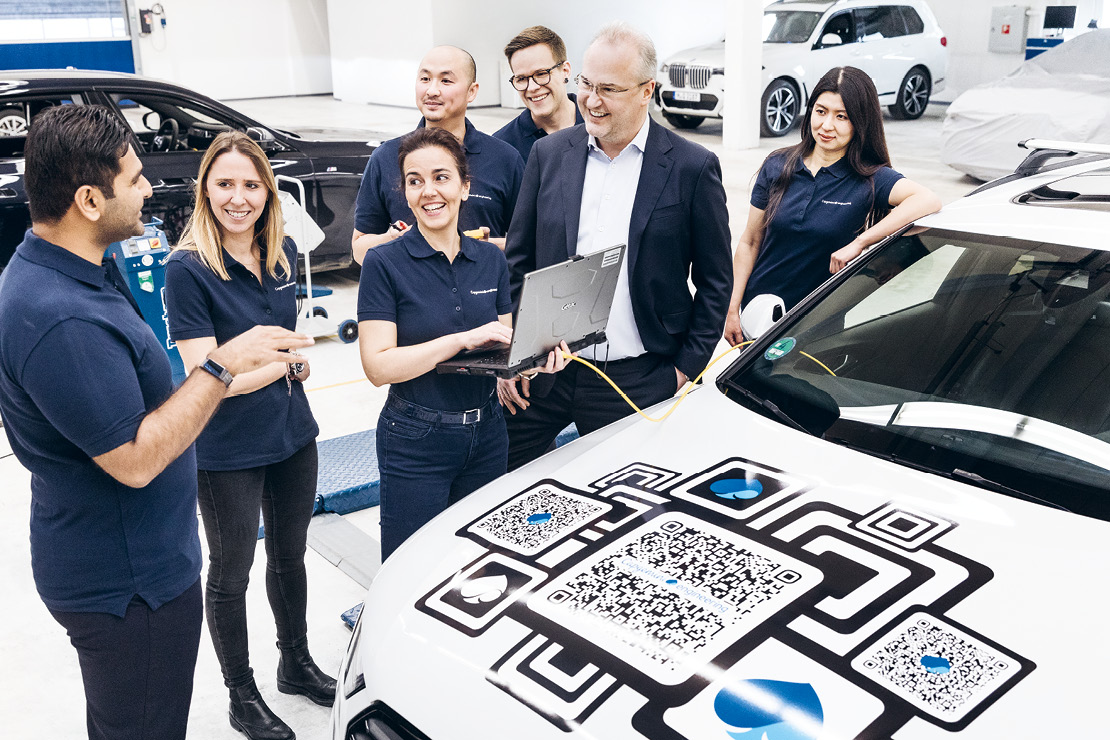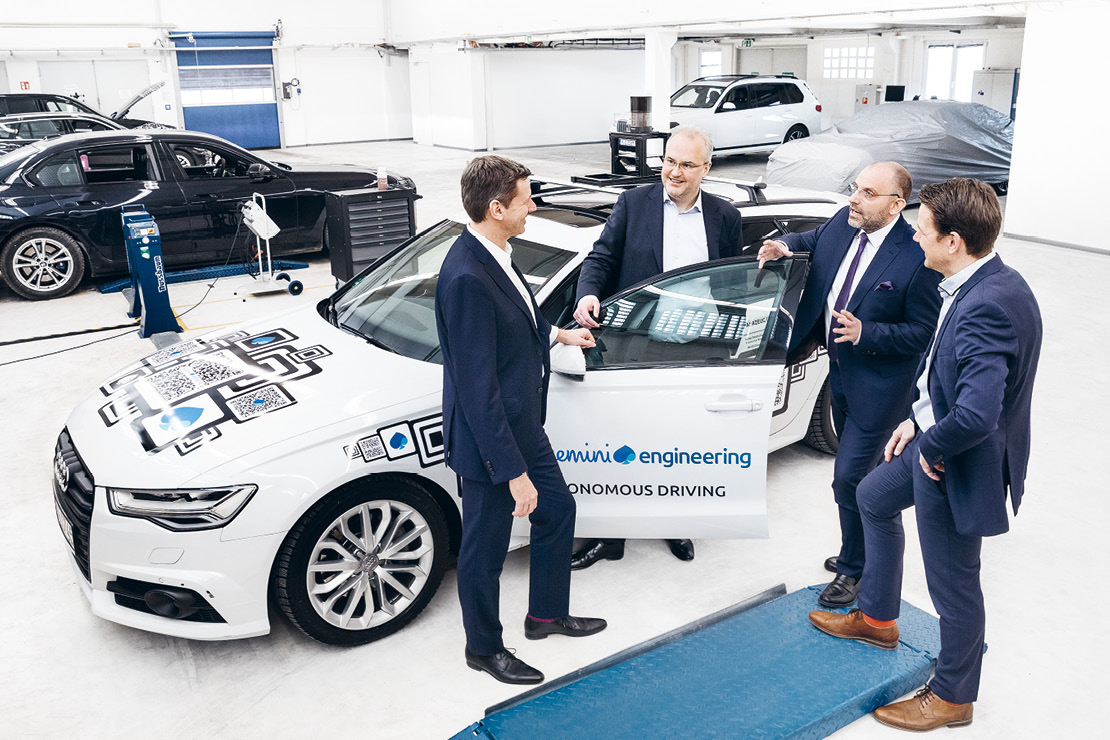
In dialog with Werner Ferreira
Mr Ferreira, everyone is talking about the »software revolution«. Isn’t that simply exaggerated? Is it not just another change among many for companies?
To understand the scale of software-driven change in the economy, it is useful to look at the overall investment in this area. R&D spending on engineering software products is expected to grow at a CAGR of ~12% across industries to reach US$700 billion by 2025. This is being amplified by the proliferation of platform-based business models, which continue to take centre stage for companies in both product- and service-centric verticals. To remain competitive and meet rapidly evolving user needs, it is imperative that organizations drive innovation in software products.
So far so good. But let’s take a look at the automotive industry. The topic of software is on everyone’s lips there. How would you describe the situation?
The industry has fully recognised this. For several years now, manufacturers have been trying to keep pace with changing societal and customer demands on the one hand, and to integrate the new digital challengers into their product systems in a profitable way on the other.
How would you describe the changes that software brings to product and service design?
Software is rapidly becoming the foundation of how we work, live, and play – a trend known as »softwarization«. But, while software itself isn’t new, what’s changed is the degree to which it determines a product’s user experience, revenue opportunities, longevity, competitiveness, market differentiation, and more.
Softwarization enables products to become »smart«, connected, and even autonomous – capabilities they didn’t have when software was only a limited part of their DNA.
The software wave has hit the automotive industry with force. How would you describe the industry’s experience so far? Which know-how is missing?
Traditional automotive OEM’s must face several challenges on their way to the software defined vehicle. In-vehicle, edge, cloud and mobile are the new technology domains for the creation of desirable mobility products and services. On one hand, the re-definition of new core competencies is shaking up established value chains. The classical pecking order is disrupted, with OEM’s insourcing now tasks that were once clear in Tier-x domain. In parallel, electronic hardware providers, especially chip houses, are wedging their way into direct relationships with the OEM’s. Today we see automotive manufacturers booking wafer start slots in semiconductor fab’s.
The industry is currently in a phase of profound transformation. How would you assess the industry’s progress on this journey?
Currently, though, 60% of OEMs are still at the beginning of their software-driven transformation (SDT) journey. Complemented by technical enablers, such as AI, our research identified three strategic pillars that can help accelerate that journey: a) Put customers at the center of the SDT strategy, analyzing and optimizing every customer journey. b) Become fully software enabled as an organization, moving toward a dynamic culture and building the capabilities to embrace agile methodologies. c) Deploy a »software house« delivery approach.
You spoke earlier about new players in the field of mobility. Especially the tech players from the USA or China. What is your advice for dealing with this challenge?
The software-driven transformation of mobility is still in its infancy. Applications, such as driver assistance systems, infotainment services or functions-on-demand, are just a start. However, the final shape of tomorrow’s mobility has not yet been determined. What service models will emerge?
What revenue streams will develop? Many auto players have shed their reservations against »big tech« in recent years and months and positioned themselves with strong partners for the challenges of tomorrow. US tech giants such as Apple and Alphabet – but also chip giants such as Qualcomm and Nvidia – are playing central roles in this.
But what will happen next? What do the manufacturers have to keep an eye on?
In the face of accelerating innovation cycles, growing customer demands and limited budgets, partnerships appear to be the way forward. The next step will be the distribution battles within the industry. Revenue sharing, once frowned upon, can be a mean to achieve common goals. The old fears of loss are being replaced by the realisation that new visions are simply easier to achieve together. It should not be forgotten, however, that in the long run all players will try to maintain a direct contact with the customer.
Do you see the opportunities primarily in partnerships and technology exchange or is there anything else beyond that that car manufacturers should be aware of?
It goes far beyond new suppliers simply providing a piece of software that is then integrated by the OEM. I see great opportunities in the use of open and free software or the development and use of common standards. With initiatives such as Eclipse SDV, SOAFEE, Android Open Source or possibly also Chinese OS activities, there are promising approaches. But there is still a lot to be done here.
Today, manufacturers still have major concerns about liability, cybersecurity and, above all, safety when it comes to function-determining free software.
We will be able to experience the potential of software like no other. Tomorrow’s mobility user experience will open the door to a new world.
Let’s come back to how this software orientation is now changing traditional customer-supplier relationships. What does this mean for you as an engineering and technology consultancy?
For the consulting industry, change is both a challenge and an opportunity. Specialists in strategy, user experience, coding, EDGE/cloud, and sustainability will play a critical role in shaping tomorrow’s mobility ecosystem. With OEMs now having to aggressively transform their business strategy and operating model, we believe that our capabilities in Concept & Design, Build & Implementation and Scaling are now the right ingredients to make a difference.
This all sounds nice in the theory of consulting, but what is behind it in concrete terms? How can such a cooperation with clients look in practice in order to really reach the goal more quickly?
People are at the centre of every successful software strategy. First the customers, because we can only be successful if we develop products and services that create real added value. Our proven approach to ideation and strategy is a significant help here. Then it’s about building a team that operates in digital-native, agile methods and processes.
For instance, our concept of the Virtual Tech Center is a partnership-based approach to quickly build high-performance software organisations, put them into production and later hand over operation to the customer. Our enormous wealth of knowledge in this area – accumulated over decades – helps proven international customers to set up new software units as well as to improve existing processes.
You indicated earlier that many technologies probably influence all industries. To what extent do you see synergies here and how can they be leveraged?
Our specialists know the challenges of the automotive industry as well as those of other digital sectors. The ability to bring this knowledge to joint projects makes us an indispensable partner.
We are able to moderate and complement the skills of both worlds and all disciplines – from classic car design to software implementation. With our knowledge and skills, we are well placed to support all partners in the evolving alliances.
This is where I would like to follow up. Consulting business is people business, and you need the best junior staff. In times of changing values and a »war for talent«, how do you convince newcomers to the industry?
We truly believe that no other industry offers young talents the same variety of topics and opportunities as ours. Together, we are shaping the industries of tomorrow. The mobility industry is undoubtedly one of the most exciting. We will be able to experience the potential of software like no other. Tomorrow’s mobility user experience will open the door to a new world.


